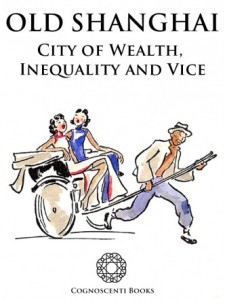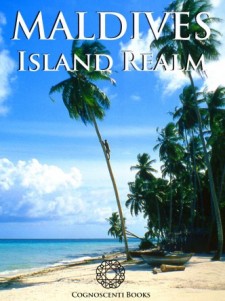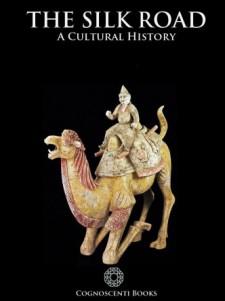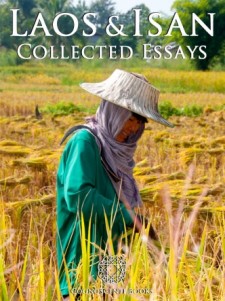Features on Asian Art, Culture, History & Travel
eBooks

OLD SHANGHAI
City of Wealth, Inequality and Vice. More than 100 illustrations, maps, bibliography
Old Shanghai was China‘s richest and most corrupt city. At its heart were the International Settlement and the French Concession – islands of affluence and colonial privilege set amidst a sea of poverty and deprivation. Yet Shanghai was also China’s most progressive and innovative city, home to Chinese cinema, modern music and a flourishing literary scene.
The 1920s and 1930s were Old Shanghai’s heyday, a period of sybaritic indulgence, revolutionary intrigue and Japanese imperialist machinations when fortunes were made and lost. Opium fumes filled the streets, while cabarets and fine restaurants jostled for space with brothels and soup kitchens. Truly, there was nothing egalitarian about colonial Shanghai, except that anyone sufficiently clever or ruthless stood a chance of amassing a fortune, regardless of race or background.

HEALTH AND WELL BEING : A MEDIEVAL GUIDE
Profusely illustrated with more than 100 colour images from 16th century Europe, 11th century Baghdad and 6th century Byzantium
The Tacuinum Sanitatis is a medieval handbook on Health and Well Being. First printed in Europe in 1531, it was aimed at an educated secular readership and offered concise and sensible advice on how to live a long, healthy and enjoyable life. Four handsomely illustrated manuscripts of the Tacuinum survive, all produced in Lombardy and now housed, respectively, at libraries in Rome, Vienna, Paris and Liège.
The Latin text describes in detail the beneficial and harmful properties of plants and foodstuffs, as well as considering social, physiological and psychological aspects of wellness. Following established medieval principles, it sets forth six essential elements for mental and physical well-being.

CHIANG MAI AND THE LANNA KINGDOM
An account of the Culture, History and People of Northern Thailand, illustrated with more than 100 colour images and a bibliography
The concept of Thailand as a unified state populated by a single majority people, the Thai, is a relatively new concept dating from the end of the absolute monarchy in 1932. Until the early decades of the present century, it was commonplace to regard the citizens of the central plains and Bangkok, the capital, as Siamese, and their country as Siam.
The area around Chiang Mai, by contrast, was considered a separate – though often subsidiary – kingdom, styled Lan Na, or ’One Million Rice Fields’. Its inhabitants spoke a separate, though related, Tai language. They dressed differently, the women wore their hair long in contrast to the cropped Siamese, and the men covered their bodies with dense, intricately patterned tattoos.

MALDIVES - ISLAND REALM
Beyond its picture-perfect tourist islands, the Maldives Archipelago is home to a sophistictated but little-known culture that dates back more than two thousand years
Asia’s smallest and least-known nation, the Maldives, lies scattered from north to south across a broad sweep of azure ocean south-west of Sri Lanka. Nearly two thousand islands, together with innumerable banks and reefs, are grouped in a chain of nineteen atolls extending from a point due west of Colombo, the Sri Lankan capital, to just south of the equator.
The atolls – the name is indigenous, the only word of Maldivian to have been adopted by English – comprise massive rings of coral perched on the peaks of a submerged mountain range. Some are only a few miles wide, but in the far south the great atoll of Suvadiva is more than forty miles across. The northern and central atolls are separated from each other by comparatively narrow channels of deep water, but in the south, especially at Addu Atoll, the channels are wider and more treacherous.

THE ARABIAN INCENSE ROAD
Gold, Frankincense and Myrrh
Perhaps the oldest trade route known to history, preceding the Silk Road by at least five hundred years, the Incense Road – also known as the Incense Route or Incense Trail – comprised a complex network of overland and maritime trade routes connecting the Mediterranean World of Antiquity with Southern Arabia, the Horn of Africa and India’s Malabar Coast. These distant lands were the sources of fragrant resins and barks such as myrrh, frankincense, cinnamon and sandalwood used in the manufacture of incense, a product greatly desired and valued in the ancient civilisations of Egypt and Persia, Mesopotamia and the Indus Valley.
The use of incense subsequently spread from these regions to Greece and to Rome, where fragrant smoke was used for religious purposes, ritual purification and to mask bad smells. As with silk on the silk road, incense was light, easily transported and rare, making it an ideal and highly valuable substance to trade.

THE SILK ROAD: A CULTURAL HISTORY
For fifteen hundred years rare and valuable goods, as well as religions, science and philosophy, were transported between East and West along the fabled Silk Road
The Silk Road owes its name to the most significant article of merchandise to travel its entire length, from east to west, for a thousand years between the 2nd century BC and the 8th century AD. Yet there is no evidence that it was ever called the ‘Silk Road’ in any language during its heyday, and it is generally accepted that the current designation was first devised by a German geographer, Ferdinand von Richthofen, in 1877.
Silk, although highly valuable, made up a relatively small proportion of the original ‘Silk Road’ traffic, and of course it only travelled westward, from China to Central Asia and the Middle East, accompanied by other Chinese exports such as ceramics, bronze artefacts, spices and medicinal herbs. This naturally meant that the caravaneers needed something similarly valuable to carry back in the other direction, from the Middle East and Central Asia to distant Chang’an [modern Xi’an].

LAOS & ISAN: COLLECTED ESSAYS
The Lao people of Laos and Northeast Thailand share a long cultural history but have long been sundered politically - yet today links between the Lao on both banks of the Mekong are flourishing
Five hundred years ago the Lao Kingdom of Lan Xang or ’One Million Elephants’ spanned a broad swathe of mainland Southeast Asia, stretching from Vietnam in the east to Burma’s Shan State in the west, and encompassing much of present-day Thailand.
The nadir came in 1827, when Prince Anu, the lord of Vientiane, attempted to march on Bangkok. His armies got no further than Khorat, where the local women, led by the wife of the governor, Khunying Mo, seduced the Lao soldiers with alcohol and feminine charms, and then slaughtered them whilst they slept. Chao Anu was captured, taken prisoner to Bangkok, and exposed in an iron cage over the Chao Phraya River until he died. The Siamese armies, meanwhile, captured Vientiane and destroyed the city in an orgy of looting and pillage.
